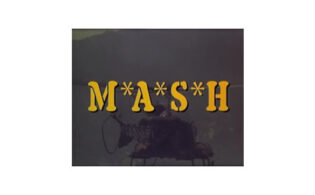PREMIUM: Andy Kaplan, the president of worldwide networks for Sony Pictures Television, explains how in a media world in which cable and satellite operators are looking to reduce costs, channels with high-quality programming and robust brand connections are well positioned for the future.
WS: AXN has been such a success story. What are the strengths of the brand? How has it evolved over the years? What does it represent to pay-TV operators?
KAPLAN: AXN has definitely evolved as a brand. The channel started out 20 years ago in Singapore, and it launched as a very male, action and extreme sports-oriented channel. Twenty years later, over time and geography, and by trying to be receptive to local audiences, it has evolved into much more of a general-entertainment channel with an edge, still high-energy and action-oriented. A lot of the franchises that we’re associated with in most of the AXN territories—CSI, NCIS, Lost or The Blacklist—have a certain feel to them that is consistent with that brand positioning. We’ve tried to find a global connective tissue that makes the channel have consistent brand recognition, while at the same time being sensitive to what works in each region. So while many of the AXN channels share similar shows, there is also plenty of room for unique programming and positioning on a territory-by-territory basis.
WS: How important have original productions been to AXN?
KAPLAN: Original productions are more important than ever. We’ve done a handful of what I’ll call “global originals,” where we are production partners and owners of programs that air on most or all the AXNs—like Hannibal, where we partnered with Gaumont, or Crossing Lines, which we did with TANDEM, or The Firm, which we did with Entertainment One. We’re producing a new show ourselves called Absentia, which stars Stana Katic from Castle and should launch later this year. These global originals give us the flexibility to have complete ownership and control of all the rights, in partnership with our distribution and sales division.
Regionally, we announced the second-season renewal of Asia’s Got Talent, which was incredibly successful for us last year on AXN Asia, and we aired season five of The Amazing Race Asia, which has been a terrific regional program for us. We also have Cash Cab in Asia and the Philippines. We’re very active in original productions in that part of the world.
In Poland, we produced a scripted drama specifically for AXN called Zbrodnia and based on its success we expect to do more originals in that market.
Partly due to incentives, we have a lot of local programming in Brazil. For example, we did a show with YouTube personalities called Entubados, and that was both really successful and very, very local.
In addition to the global originals, we’re doing more and more programming that is either country-specific or pan-regional, and we’ll continue to increase the volume and the ratio of original productions over time.
WS: So it’s about finding a balance between the acquired product and the originals?
KAPLAN: That’s exactly right. The big Hollywood programs are still the cornerstone of AXN’s brand, but the competition for them is high, and it becomes more and more challenging to acquire all of the rights that we need to deliver a full 360-degree digital experience as well as a linear feed to our affiliate partners. As a result, the investment in original productions gives us more and more flexibility on that front. But it is still very much a balance. The franchises like CSI and NCIS, and shows like Criminal Minds, are important pillars of the programming grid.
WS: I imagine it varies territory by territory, but how would you describe the health of the pay-TV business?
KAPLAN: It does vary territory by territory, country by country, and has to do with the evolution of pay TV and subscriptions in a particular market. This has always been true, but a lot of what happens in the U.S. becomes the real precursor for what’s going to happen around the world. In a lot of these markets we’re in, the pay-TV business is very, very healthy. Having said that, operators are all trying to reduce their costs, and they’re all trying to deliver to their customers digital, nonlinear, on-demand, flexible experiences. I think we’ll see more and more skinny bundles popping up, but it just depends on the market and how evolved and penetrated and developed the cable and satellite worlds are versus the telcos. In Africa, as an emerging market example, there’s not a lot of cable and satellite penetration relative to the size of the population, and I think you’re going to see a lot of telco and mobile activity happen over time.
Another interesting case is Indonesia, which has probably 10- or 12-percent pay-TV penetration. You would expect a whole lot of growth to come in that market, and we’ve hoped that was going to be the case for many years. I think you’re going to see a lot of disruption there and the possibility of a lot of over-the-top activity or telco or mobile activity because the traditional cable and satellite business hasn’t gained penetration.
There are other markets that have 60- to 80-percent penetration. Latin America continues to be a very healthy pay-TV market, and penetration continues to grow there, and some of these more nontraditional or disruptive offerings haven’t caught on as quickly. It’s harder to disrupt a fully developed market.
WS: What do Sony’s channels offer advertisers, and in particular, how are they responding to the portfolio of originals that you have on the various channels?
KAPLAN: The AXNs, the Sony Channels—the offerings that are well established and fully penetrated, with great brand recognition and great programming—are always a good and solid traditional offering for advertisers. But the original productions are where you can do more and more things in terms of integrations, special sponsorship packages and a lot of digital offerings that you couldn’t necessarily do with acquired programming. So, again, it goes back to why the investment in original production is so important—it gives us much more flexibility and another conversation to have with advertisers that we couldn’t otherwise have.
WS: Tell us about the importance of airing episodes of shows on the same day, or as close as possible to the same day, as they air in the U.S.
KAPLAN: It is important in a lot of markets. One, because of piracy, but also because of the social-media environment we’re living in where everybody around the world knows exactly what’s happening in the U.S., and you don’t have a lot of time or advance opportunity to tell your own story. There are markets where we are trying, if not day-and-date, a 24-hour or 48-hour turnaround. In Asia, we’ve got The Blacklist and Quantico going within 12 hours of the U.S. airing, and that’s been an important strategy for us in Asia, which still airs a lot of content in English and where we don’t have dubbing and subtitling delays and challenges. If you have to subtitle or dub, and if it’s a broadcast show whose production cycle does not give as much of a lead time as maybe a show that’s produced in advance for binge-watching and offers you lead time to dub or subtitle, then the logistics [of a 24-hour or 48-hour turnaround] are complicated. But because it’s become more and more of a necessity, suppliers have gotten better and faster and more efficient at delivering us shows with sufficient lead time.
WS: And what about global premieres—launching a show on the same day and date across regions?
KAPLAN: A day-and-date launch globally is not as important as it might have been in the past. We are trying to be much more locally oriented, so if the opportunity exists to launch a show on a day-and-date basis across the region because it happened to work on a local basis, that’s great. But I don’t think it’s the priority that it might have been a few years ago. If it makes sense to launch a show in Asia on a particular date but wait a few weeks in Latin America because the needs in that particular region are different from a scheduling or a marketing standpoint, then we will. I don’t know that the viewer in Brazil cares whether a show is launching at the same time in Singapore.
WS: Viewers don’t only watch linear channels. How are you making your content available on multiple platforms?
KAPLAN: We realize that the days of delivering our channels only on a linear basis are really behind us. It’s not what the operators want because it’s not what the customer needs. So, we’re developing and investing in various digital offerings around the world and are continuing to push them out. In Latin America, for example, we have launched a TV Everywhere app with AXN and Canal Sony. In Central Europe, we have an OTT app that’s available through most of our affiliates. Crackle, which is our big OTT AVOD offering in the U.S., is being rolled out in Latin America and Brazil on an SVOD basis with our pay-TV partners—not around them, but with them as an additional offering that we can supply to them. In the Netherlands, our Film1 channel just launched on PlayStation, so that’s a new opportunity that will, I think, evolve around the world over time.
We made an investment in a company called Hopster, which is a young kids’ app. Our kids’ business is starting to grow significantly, and we already have a big presence in the U.K. with the kids’ channels POP and Tiny Pop. We’re looking at growing those brands around the world, so we dipped our toe in the water with our investment in Hopster to learn more about that business.
And, of course, in India, which is a huge business, our digital offering is an app called Sony LIV, which is becoming more and more an important part of their ecosystem every day.
WS: Speaking of India, SPT operates several channels there. How does AXN complement the rest of the channels in the portfolio?
KAPLAN: India is our biggest business and a market in which we are one of the major broadcasters. As a result, we have a huge portfolio of channels—Hindi-language general-entertainment, music and comedy channels, English-language channels like AXN, our movie channel and a number of sports channels. Sports is an important pillar of our business in India, and we are in the process of growing our sports business even more through the acquisition of TEN Sports.
We have a fully vertical and horizontal offering for the cable and satellite players there. In India, there is a voracious appetite for English-language content, but the audience is relatively small compared to the national Hindi-language businesses or some of the regional-language businesses. Within the English-language world, AXN is one of the top players, and it’s an important part of our diverse offering. But if you look at AXN’s ratings compared to Hindi-language Sony Entertainment Television, AXN’s are smaller.
WS: Sony was one of the first companies to launch channels in India. What factors have contributed to its success there?
KAPLAN: In India, Sony certainly had an early mover advantage. Twenty years ago, it was Sony, Fox under the Star TV brand and the local player Zee. Being one of the first to invest significantly in India, and then hanging in there through a challenging operating environment, has reaped a lot of benefits for us and has contributed to the fact that we’re so big and successful there. Our investments in sports rights and cricket have also been a very important growth driver for us and add to the breadth and depth of our offering; and now the investment in digital—all of which has contributed to us being an overnight success 21 years later!
WS: Do you see opportunities to launch more channels or new brands in any territory around the world?
KAPLAN: We are being very selective. The days of launching or acquiring as many channels as you can are probably behind us, certainly in markets that are much more developed. We’re looking at opportunities to expand our existing brands and are being very tactical and selective. There are still opportunities out there, but, as opposed to some of our competitors who took a position in the last number of years of trying to acquire as much “real estate” as they could, and launch as many channels as they could just to have a big and wide offering, we have taken a more narrow and selective approach. Our plan has been to have fewer but stronger channels. Now, in an environment where MVPDs around the world are trying to reduce their own content costs, I think it’s ultimately going to end up serving us well. Having said that, I think there are more digital opportunities for us around the world as we continue to leverage our existing infrastructure, so wherever we are we should ultimately have a linear and nonlinear offering in some form or another. That’s the strategy we’re pursuing.
WS: Are there lessons and best practices that you have learned from Crackle, SPT’s multiplatform streaming service, that you can apply elsewhere in the world?
KAPLAN: Yes. We’re very committed in the U.S. to Crackle’s AVOD model. We think we’ve carved out a unique niche. Where most players are playing in the SVOD space, we think we can win and succeed in the AVOD world here. We tried AVOD in Latin America, and while the offering was really good, I think we were just too early and the digital advertising marketplace wasn’t ready for us. So we’ve taken this opportunity to pivot to an SVOD offering in Latin America, in partnership with our MVPD partners there. In Latin America, the SVOD world is still in earlier stages than in a lot of other places, so we saw a good opportunity to do that. As we look around the rest of the world, and we evaluate whether to pursue an AVOD versus an SVOD strategy, I think it’ll be a market-by-market decision in terms of where a particular market is in its evolution of digital advertising and whether or not it is strong enough to support an AVOD offering like a Crackle, or whether pursuing an SVOD strategy is the way to go. So we’ll take that case-by-case, but Crackle is a very flexible technology platform. We have a terrific infrastructure that is powering the digital technology of our whole network portfolio around the world. I think we’re going to have the ability to achieve some economies of scale on that, which should hopefully be an opportunity for us.
WS: How important are brands in this environment, where people are either diminishing their cable bundles or watching programming online?
KAPLAN: Brands are really important. One of the things we’ve tried to do more recently is to create a stronger association between our channels and the Sony brand. We want to embrace our connection to one of the greatest and strongest consumer and technology brands in the world, both on a B2B and a consumer basis, so you will see that many of our channels worldwide now carry the endorsement, “a Sony Network.” In line with this, we’ve also invested in rebranding or updating the look and feel of many of our channels around the world, including AXN. A strong brand helps a channel develop a connection to the audience—as was the case with AXN—and as skinny bundles and over-the-top models evolve, strong brand connections and quality programming will keep our networks successful for many years to come.






